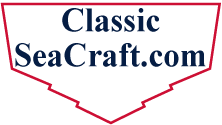
 |
Re: Low end torque - 4 stroke vs. 2 stroke
Quote:
|
Re: Low end torque - 4 stroke vs. 2 stroke
The Zukes use a lower gear ratio in the lower unit to swing the bigger prop and compensate on the low end power, it apparently works. The 2's will usually give better performance, the yami guys say they needed 25HP more to equal the sanme feel if at all.
|
Re: Low end torque - 4 stroke vs. 2 stroke
I ran a 250 2 stroke yamaha on my 23 with a bracket then switched to a 250 suzuki 4 stroke. I'd have to say that the suzuki with that bigger prop had more noticeable low end torque. I loved that zuke.
strick |
Re: Low end torque - 4 stroke vs. 2 stroke
Seems like there are two different torque issues that matter to boaters, (1) hole shot and (2) ability to stay on plane at low speeds. I can see where the fast rev ability of 2 stokes would get you out of the hole faster(maybe that's not torque?), but does that have much effect on torque delivery relatively low in the torque/rpm curve, needed for low speed planing. My experience is only with 2 stroke outboards vs 4 stroke 1/0s, but the i/0s seemed to have far more torque delivery low in the rpm curve and much better low speed planing ability. I never put much attention on hole shot, maybe because divers load so much weight into the boat.
|
Re: Low end torque - 4 stroke vs. 2 stroke
I would think planing speed would be determined by a combination of hull design, propeller design and weight distribution. You would only need enough torque to move the hull forward to a speed that hydrodynamic forces take over, whether it be a 50 horse or 250 horse motor. It would be interesting to see what that torque number would be on a properly set up SeaCraft hull vs. others. Do any of these new motors have a torque display? Bushwacker showed me some interesting print outs from his E-tech; no torque readings though.
|
Re: Low end torque - 4 stroke vs. 2 stroke
I don't think it is quite that simple in practice. All those things affect planning speed, but when its sloppy, the forces on the boat keep changing rapidly. If you don't have the low end torque to maintain prop rpm, what happens is: its sloppy and you want to plane slowly, so you increase throttle until the boat gets up and planes, then its going to fast for comfort, so you reduce throttle a little to slow down a little, but then the boat falls off a plane and you're going 6 knots again, repeat. If you have sufficient torque, you can hold the boat on a plane at a slow and more comfortable speed.
|
Re: Low end torque - 4 stroke vs. 2 stroke
If there is enough torque and Bite of the prop.
|
Re: Low end torque - 4 stroke vs. 2 stroke
Quote:
|
Re: Low end torque - 4 stroke vs. 2 stroke
I have a 300 Suzuke on my 23 CC turning a 16 by 20 three blade wheel. Most noticeable difference for me is the boats ability to stay on plane at just about any speed in any water/wind/wave combination condition.
|
Re: Low end torque - 4 stroke vs. 2 stroke
Crudely illustrated, the difference is not whether it's 2-stroke or 4-stroke. The difference is the torque curve and horsepower "powerband".
For example, if a 225 hp motor only develops the torque to reach 75% of the full 225 hp between 3500 and 4000 rpms, then below 4K it will perform like it's only developing 170 hp or less. On the other hand, a motor which has the torque to spin up to say 90% of it's rated horsepower at only 3000 rpms, then at 3K it's developing over 200 hp already. Both motors may develop a true 225 hp at the top of their respective powerbands. Take Mercury Verados. A 225 hp rated Verado develops its max hp (238 hp) at 5800 rpms. (It actually makes more at even higher rpms, but the torque curve falls off) It has a very flat torque curve, thanks to the supercharger. Mercury doen't reveal the maximum torque developed, just the shape ot the curve. So that same 225 motor is already developing over 200 hp at only 2650 rpms, giving it tremendous acceleration potential. It's greatest drawback is its weight. Contrast that with the old OMC 90* V6 225. While it also developed 230 hp at the top of it's powerband, it didn't break the 200 hp mark until the motor was turning 4100 rpms. I don't know how much the max torque developed was, but the torque curve is much steeper, not achieving 75% of torque until above 3000 rpms. Not just horsepower, ladies and gentlemen, but the torque to develop and apply it when you need it. And just for the record, the Etec is supposed to develop about as much torque as the Verado, although with a bit steeper torque curve. |
| All times are GMT -4. The time now is 06:48 AM. |
Powered by vBulletin® Version 3.8.7
Copyright ©2000 - 2025, vBulletin Solutions, Inc.
All original content © 2003-2013 ClassicSeacraft